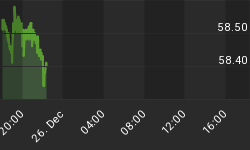This weekend's Paris attacks, occurring in the middle of one of history's largest mass-migrations, has the feel of uncharted territory. But it's actually an eerie echo of something that happened nearly two thousand years ago in more-or-less the same place.
According to some historians, the fall of the Roman Empire wasn't pre-ordained. By AD 300 it had its problems, including far-flung, hard-to-defend borders and recurring currency crises, but was generally stable and prosperous. Then a new power arose in the East. The Huns were horse archers who could out-ride and out-shoot their neighbors, and they terrorized the Vandals and Goths who lived in what is now Germany and the Balkans, driving them west to Rome's borders.
Rome chose to let half a million "barbarians" enter, hoping to use them as soldiers and laborers. Instead, it found itself with invading armies and unstable, uncontrollable political coalitions. The complete story is winding, convoluted and full of unfamiliar names, but it ends with the division of the Empire into two parts and the destruction of the original, Italian half. Here's a History Channel synopsis of the process:
The arrival of the Huns and the migration of the Barbarian tribes
The Barbarian attacks on Rome partially stemmed from a mass migration caused by the Huns' invasion of Europe in the late fourth century. When these Eurasian warriors rampaged through northern Europe, they drove many Germanic tribes to the borders of the Roman Empire. The Romans grudgingly allowed members of the Visigoth tribe to cross south of the Danube and into the safety of Roman territory, but they treated them with extreme cruelty. According to the historian Ammianus Marcellinus, Roman officials even forced the starving Goths to trade their children into slavery in exchange for dog meat. In brutalizing the Goths, the Romans created a dangerous enemy within their own borders. When the oppression became too much to bear, the Goths rose up in revolt and eventually routed a Roman army and killed the Eastern Emperor Valens during the Battle of Adrianople in A.D. 378. The shocked Romans negotiated a flimsy peace with the barbarians, but the truce unraveled in 410, when the Goth King Alaric moved west and sacked Rome. With the Western Empire weakened, Germanic tribes like the Vandals and the Saxons were able to surge across its borders and occupy Britain, Spain and North Africa.
For more, see the Wikipedia entry on the sack of Rome
Obviously this isn't an exact fit -- especially the part about the existing empire being in fairly good shape, since clearly today's eurozone has some other potentially fatal flaws. But the part about the rise of a new enemy in the West causing a mass-migration into "civilized" Europe, which opens its borders in order to obtain cheap labor without offering what the newcomers view as full rights of citizenship, is close enough to provide some useful insight.
Meanwhile, the differences between now and then make the current situation even scarier. Automatic weapons and home-made bombs give five or six angry people the ability to wreak havoc on thousands. And the development of dirty bombs threatens to make the next attack effectively permanent by irradiating whole city blocks.
But the most ominous difference is that even in the absence of a million refugees at the border, the eurozone as now configured is doomed. Debt is soaring, populations are aging, the periphery can't function in a German-style monetary regime and the main political parties are too wedded to the status quo to offer effective solutions. This, in short, is a mess without an obvious fix.















